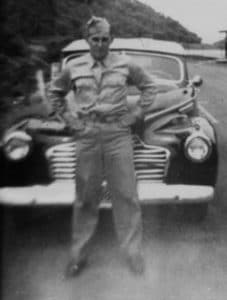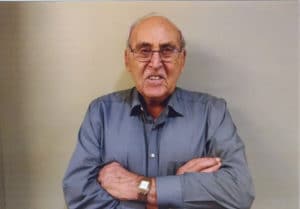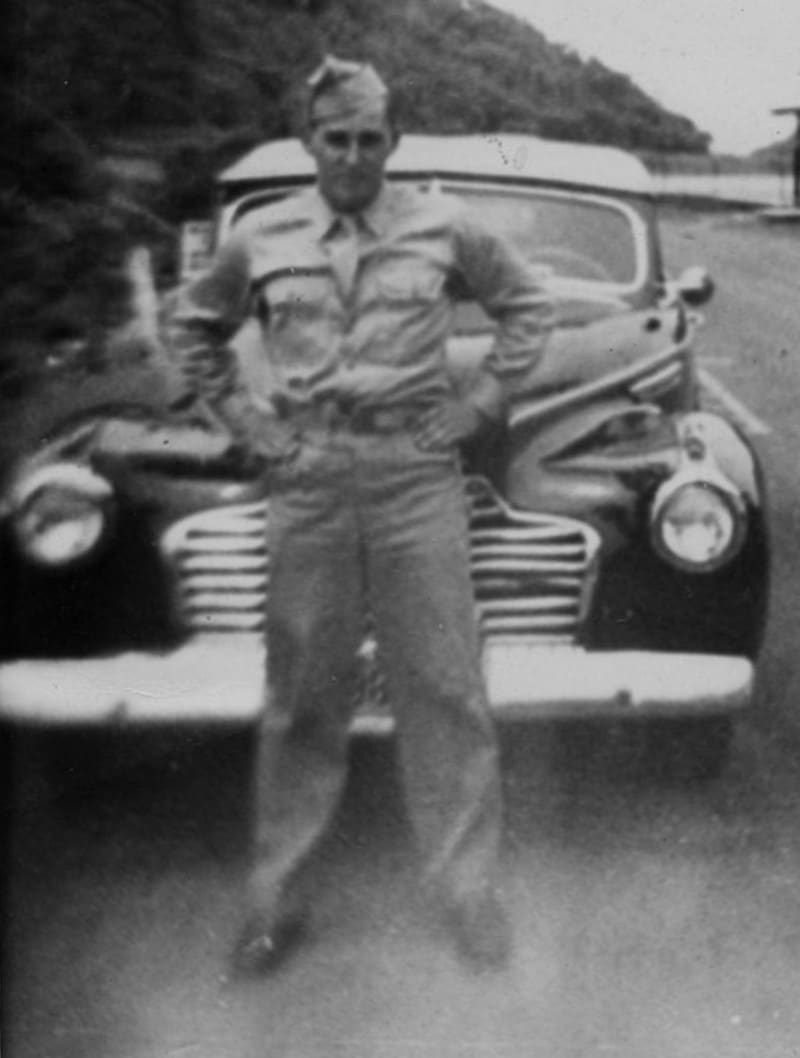The American Legion will be celebrating its 100th birthday in 2019. In addition to national and statewide activities commemorating this milestone, American Post 328 of St. Joseph is planning a number of festive and patriotic activities for the community.
One of those special events will be profiles of St. Joseph-area veterans published in each Newsleader during 2019. The Newsleader is joining with Post 328 to recognize veterans and Legion members who served during World War II, Korea, Vietnam, Iraq, Afghanistan and other theaters of conflict and Cold War tensions.
by Tom Klecker
St. Joseph American Legion
Othmar Schmitz, 91, U.S. Army WWII era
Prior to being drafted into the army on Dec. 7, 1945 (Pearl Harbor Day anniversary), Othmar was a farm worker.
Othmar completed basic training at Fort Bliss, Texas. His advance training at Fort Ord, California, was in antiaircraft-artillery. Having completed training, he boarded what was then called a troop train. The train traveled across the width of the United States, stopping along the way to pick up other soldiers. The train carried 1,800 soldiers, upon arrival at Fort Pickett, Virginia. Fort Pickett was a receiving station where soldiers were assigned to certain duty posts.
Contrary to Othmar’s expectations, he was not ordered to Germany or Japan as part of an occupation force. He was ordered to Fort Amador. Fort Amador is on an island in the Pacific ocean, off shore from the strategically important Panama Canal.
Othmar had six months additional training on the big 16-inch guns, and also 14-inch guns. The large guns had an accuracy range of up to 20 miles. His five-man crew was then transported to the tiny island of Taboga.
To say this assignment was in an isolated location would be an understatement. The men on the island had their mail and provisions/supplies brought out to them by boat and sea plane. As young “invincible” and daring soldiers, they swam with the sharks.
After a while, Othmar and others welded two fuel tanks salvaged from an airplane. They fashioned for themselves a two-man raft. Having determined the raft reasonably sea worthy, Othmar and his buddies took turns paddling this raft to an island five miles away. The journey to Taboga took six to seven hours in shark-infested waters. Why might one ask as to the reason for such a risky undertaking? On Tabogo they could buy a case “very good rum for $10.”
On a much more somber note, Othmar related a tragic event that took place on June 11, 1946, 6-11-1946 (Father’s Day). An airplane carrying wives, children and army personnel, heading for the main base at Fort Amador, crashed into the top of a mountain on an adjacent island.
One young soldier in particular was so looking forward to spending a brief visit with his wife and his baby whom he had not yet seen.
For two days Othmar and the other soldiers searched the area and recovered body parts they placed in plastic bags. One can only imagine how traumatic this experience likely was for 19-year-old Othmar.
After six months Othmar rotated back to the main base at Fort Amador. He was given another job, that of truck driver. On one trip, Othmar relates how a tie rod broke where upon he lost control of the vehicle. It crashed into the ocean. He sustained a concussion and spent two weeks in the hospital. When he was able to resume his duties, he just “drove people around shopping and keeping the staff cars clean.”
In due time Othmar boarded a hospital ship that was returning stateside from Germany. After five days at sea, he arrived at the port of New Orleans from which he was discharged from active duty.
Othmar was waiting to take a train home to Minnesota. While waiting in a USO bar, the train started to pull out of the station. Othmar literally had to run after the train. Mix up in departure times?
He arrived at Union Station, St. Paul, and took a Greyhound bus to St. Cloud. Finally he got home at 11 p.m. Everyone was sleeping. He woke his mom.
When Othmar got home, the money he sent home was spent by his mother given the acute needs of the family.
Reflecting on his military experience, Othmar was grateful he did not contract any tropical illnesses. While separation from family and friends was difficult, he remembers “how hard it was on the married guys.” Mail came in twice weekly.
He hated food in basic training but found it got better later on. He remembers frequent movies, good buddies, no tattoos, Sunday religious services and free coffee, donuts and rolls when available. When Othmar was asked to reflect upon his military experience this is what he shared.
“Before the army I pushed around, considered farming, worked from one farmer to another. He found the army “interesting. I’m glad I served, it was a good experience. Being away from home, I definitely felt more independent and grown up.”
After his discharge from the army, Othmar worked at a number of jobs: farm work, Cold Spring Granite and Cold Spring Brewery. When the Korean War broke out he was classified A-1, but was never called back to active service.
After a one-year courtship he married Marilyn in 1949. They had eight children (three of whom are deceased).
To support his large family, Marilyn and Othmar bought a farm north of St. Joseph. Each morning before going to work at the Great Northern Shops, he would feed the baby and milk the cows. As an electrician, Othmar worked for the Great Northern-Burlington Northern Railroad for 36 years. Othmar and Marilyn have been married for 69 years.
Besides parenting eight children, they have 20 grandchildren and 26 great-grandchildren. When asked to what he attributes his active life and longevity, Othmar says volunteerism, exercise, travel, spirituality and sociability.

Othmar Schmitz in 1946.

Othmar Schmitz today.



